3 reasons to give your dog a chew bone
Chew bone is a great snack for our furry friends.
Every dog has its own taste buds, and what might be a perfect meal for one dog may not hit the spot for another. No worries, though! At PrimaDog, we have got your back in making sure your furry friend gets the best, most tail-waggingly awesome food that supports their well-being. That is why we offer a complete satisfaction guarantee on all PrimaDog products.
If the product you bought did not quite match your expectations or your dog was not feeling it, no stress! Just fill out the Satisfaction Guarantee form and remember to attach the receipt.
Our customer service team will get in touch with you and sort you out with compensation for the product.
Now, we know some of our four-legged friends can be sensitive to changes in their diet, so take it easy when introducing them to the new food. Slow and steady wins the race! Check out our tips on how to switch up your dog’s food and find the perfect match.
Quality is our jam. If you spot anything funky with our products, just shoot us a quick Faulty Product form. We are all about keeping our standards high!
Feel like digging deeper? Find out more about the top-notch quality and where PrimaDog products come from.
A dog chew bone is not just a tasty treat that dogs become thrilled for; it is also a source of joy and offers some excellent perks for your furry friend. Let's dig into why!
Those yellowish tartar buildups on your dog's teeth can lead to gum inflammation and periodontitis, an inflammation of the tissue surrounding the tooth. In addition to tooth fractures, periodontitis is one of the most common reasons for tooth extraction in dogs. The powerful chewing action on a dog chew bone helps combat plaque, preventing tartar formation and maintaining your dog's dental hygiene.
Chomping on a chew bone is a dog's way of keeping their pearly whites gleaming. The chewing motion naturally removes plaque, giving dental issues a run for their money!
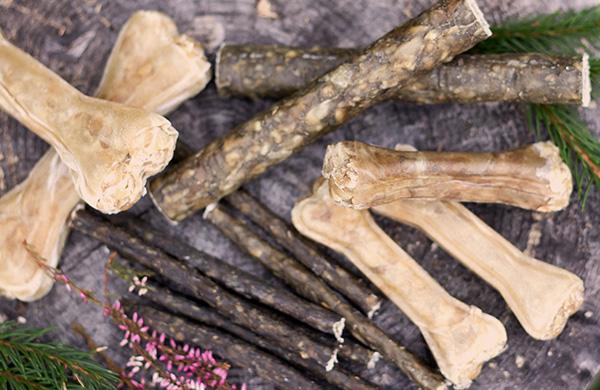
While some lucky dogs may flaunt naturally clean and dazzling teeth from their chew bone habits alone, most dogs will eventually need a little extra dental care. Regular visits to the veterinarian are essential, especially if your furry friend has a case of bad breath. That is a sure sign to schedule your dog's dental check-up.
Want to take the best care of your dog’s oral health at home? Get into a daily brushing routine using toothpaste for dogs and a gentle toothbrush and throw in some regular dog chew bone sessions. Not only will these routines keep your dog's teeth shining, but they will also save you from digging deep into your pockets for costly dental procedures. However, it's not advisable to skimp on your dog's dental care. Toothaches can be a real pain, and untreated oral issues can seriously affect your dog's overall well-being.
Indulge your furry friend in relaxing activities that nourish their mental well-being. Dogs are naturally inclined to explore for food, savour a good chew, and tear it apart. Merely munching on dry kibble from a bowl fails to satisfy their deep-rooted connection with food. That's where dog chew bones come in.
Dog chew bones offer a safe and enjoyable outlet for dogs to express their instincts and engage in typical behaviours. They provide natural mental stimulation while ensuring your dog's safety. However, it's crucial not to leave your dog unsupervised with a chew bone, as some enthusiastic dogs may attempt to swallow it whole or in large pieces.
It's not uncommon for dogs to try to devour the bone swiftly if another furry companion shows interest. To maintain your dog's tranquillity and well-being, it's highly recommended to let them relish their chew bone without interruption.
By encouraging chewing, you activate the release of endorphins, those wonderful "feel-good" hormones that bring pleasure and create a calming effect for your dog. This helps alleviate stress and anxiety levels. If your dog is feeling overwhelmed, nervous, or excessively excited, they may resort to chewing on inappropriate items like shoes or furniture. Offering an approved chewable item, such as a delicious dog chew bone, redirects their chewing behaviour, safeguards your sofas and table legs, and promotes a peaceful environment.
After an adventurous stroll through the woods or a lively play session, a chew bone becomes a soothing and beneficial way for your dog to unwind. It satisfies their need to chew while providing a moment of relaxation and contentment.
PrimaDog Rough Chews, made in Europe, are grain-free chew bones that offer durable and delicious chewing experience for your dog. The Rough Chews range includes dental bones and tough chew bones with meaty filling infused with Nordic superfood berries. Explore the products!
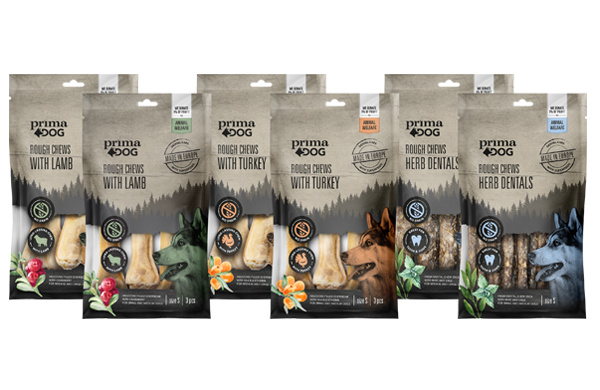
Tips for finding the perfect dog chew bone:
Chewing strength: Even the smallest terrier can have a mighty jaw, so they might need a tough chew bone. But if your senior dog has dental issues or your dog has a very tiny mouth, a crunchy chew bar or a thin chew stick could be an easier option to sink their teeth into.
Taste preferences: Some dogs will happily devour plain rawhide bones, while others might crave a chew bone with a meaty filling or a tasty wrapping to really get their drool flowing.
Allergies and sensitivities: If your dog's tummy or skin gets upset by grains or certain proteins, make sure to check the chew bone's product description for any potential allergens. PrimaDog's European-made Rough Chews are grain-free, and filled bones feature turkey or lamb, which are usually well tolerated alongside the rawhide.Want to know more about feeding a dog with sensitive stomach? Read our article.
Puppy-friendly options: Double-check the packaging to make sure the chew bones are safe for your little rascal, as some of them may be recommended for pups six months and older. All PrimaDog Rough Chews are suitable for puppies too!
Intended use: For those dogs in need of long-lasting tranquillity, a sturdy filled chew boneis the way to go. But if you are simply looking for a quick chew or a reward after a successful nail trimming session, go for a crunchy chew bar or other quicker chewing options that won't keep the dog occupied for too long.
While chewing is a natural urge for dogs, it is important not to go overboard with chewables. Dog chew bones are considered treats, so they should make up no more than 10% of your furry friend's daily diet.
Main photo: Mariia Kornevitš, 1st illustration photo: Jutta Romppainen
When feeding an active dog, you must be mindful with the food choices. It's all about picking the right fuel to keep your energetic companion going strong during training and help the dog’s muscles recover after a heavy performance. The key is to match the dog’s energy needs just right.
How much food an active dog needs depends on how intense, how long, and how often the dog exercises. You can estimate the dog’s activity level by counting the hours the dog typically moves per day:
If your furry friend is all about the high-energy activities like agility competitions or heavy-duty work, it needs a specific diet to ensure proper recovery for staying on top of the game. But if your dog only occasionally dabbles in agility training, there is no need to stress about changing up its chow routine. A balanced, basic diet will do the trick just fine.
The food for an active dog should have similar protein and fat content as puppy food. Aim for around 25–30% protein and about 20% fat. And make sure the food is easy on the dog’s tummy, so it gets digested without a hitch. Keep an eye out for any special dietary needs or allergies your dog might have when choosing the food. Read more about choosing the right food for your dog.
The topics of this article are:
If your dog is getting in a solid 1–2 hours of daily exercise and its hobbies fit right in that timeframe, your dog’s activity level is considered normal. A weekly agility session, a random competition here and there, and regular walks won't really crank up the dog’s energy needs. So, no need to go overboard with the dog’s food. A good high-quality basic diet is usually enough for your dog. You can save the active dog food for the real workout warriors!
An active home dog can have a slightly rounder physique compared to sporty dogs, since their workload is usually lower. With the body condition, aim for a score of around 5 on a scale of 1–9 for your home dog. That's just one notch higher than what's recommended for an agility dog. Ideally, you should be able to feel the dog’s ribs without any trouble, see a nice waistline from above, and notice a gentle curve in their tummy area.
IN FEEDING AN ACTIVE HOME DOG, THE MOST IMPORTANT THING IS TO MAINTAIN THE DOG'S OVERALL FITNESS AND SUITABLE BODY CONDITION SCORE, AND TO ENSURE THAT THE DOG HAS ENOUGH ENERGY FOR BOTH TRAINING AND HOME ACTIVITIES.
PrimaDog offers some great options for your active home dog! You can choose the Grain-free Venison & Turkey or Grain-free Salmon & Potato dry foods, which are spot-on when it comes to protein and fat content. If your four-legged friend needs an extra energy boost, PrimaDog has got your back with our own Grain-free Active Duck & Herring kibble. It's all about finding the right fit, so go ahead and dive into the world of PrimaDog's grain-free dry foods.
You can also give your dog an energy boost by using PrimaDog's sausages for dogs or meat. Explore the possibilities of adding variety in your furry friend's meals.
Just like with dog feeding in general, the diet for working and sporting dogs is designed to meet their energy requirements. You want them to stay fit and muscular without tipping the scales in the wrong direction. Hence, a carefully planned food for an active dog is a crucial part of maintaining good fitness and endurance.
The diet can be influenced by the dog’s rest and active periods, especially for hunting dogs. It is all about understanding their unique needs and making sure they are fuelled up right for those specific times of rest and action.
When figuring out how to feed your working or sporting dog, start by considering their level of physical activity. You can break it down into two main categories: short but intense bursts of sprinting and long-haul endurance performances.
The physique of a sporting and working dog is influenced by both genetics and the environment. This means everything from their exercise routine to what they eat during their growth phase plays a role. If you are aiming for top-notch performances with your furry companion, it is all about providing them diverse exercise during their puppy days to build up basic fitness, muscle strength, and body control. Remember to provide a healthy and varied diet that gives plenty of energy to grow and thrive. Check out more info on how to feed a puppy.
Do you and your four-legged hunting partner hit the great outdoors? Hunting is quite a tough activity, and your trusty companion deserves a proper meal. Check out PrimaDog's guide how to keep your hunting dog well-fed.
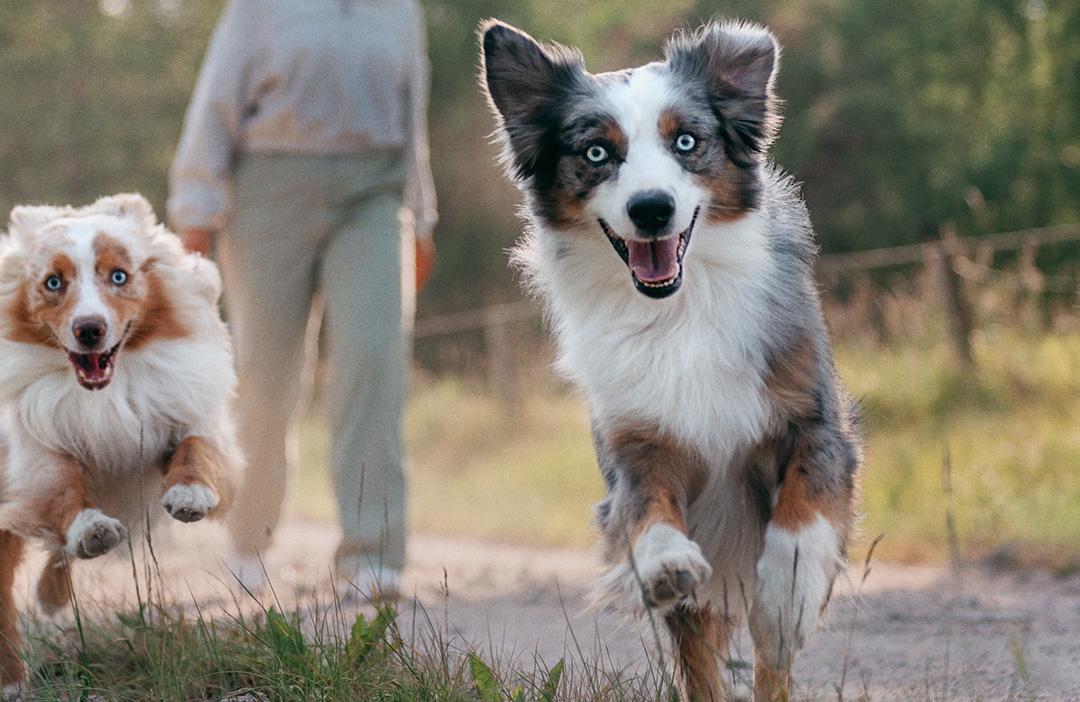
Agility is way more than just competing, which is why the energy requirements for an active agility dog can be high. All that regular training, getting in top physical shape, and doing warm-up and cool-down exercises before and after competitions increase the dog's energy expenditure. These agile canines are always on the move!
During the agility run, the dog performs tight turns, quick bursts of speed, sudden stops, and high jumps. It is a real workout, and it puts strain on the dog’s joints and tendons. That is why keeping the dog at its ideal weight is crucial, so it does not put too much stress on its muscles and bones, which can hinder both speed and recovery from the performance. And here is a pro tip: consider going for active dog food that includes joint supplements.
In the 1–9 body condition scale, an ideal for agility dog is 4 which means lean. The dog should have a thin layer of fat covering the ribs, with the ribs being easily felt. The waistline should be clearly visible from the top, and the abdominal line should rise when viewed from the side. However, the dog should not become too thin to prevent a decline in muscle condition.
A DOG NEEDS APPROXIMATELY 0.5 DL OF WATER PER KILOGRAM OF BODY WEIGHT, BUT EXERCISE INCREASES THE DOG'S WATER NEEDS. FOR A MEDIUM-SIZED ACTIVE DOG, THE WATER REQUIREMENT IS ABOUT 1–2 LITERS PER DAY. MOISTENED DRY FOOD, WET FOOD, AND MEAT CAN HELP TO INCREASE THE FLUID INTAKE.
Agility run lasts about 1–2 minutes, which only bumps up the dog's energy needs by about 10–20%. But here's the thing: training sessions and physical exercises can be quite the marathon. That is why it is smart to go for a dog food that is tailor-made for active dogs, giving them the right amount of protein and fat. It is like a power-up for their body, providing the energy they need and important amino acids to repair hard-working muscles.
Make sure to feed the dog several hours before agility run, so the dog’s energy stores are full, but stomach is empty.
Did you know that PrimaDog Active Duck & Herring dog food is designed in collaboration with the Finnish Agility Association? The Active dry food contains 30% protein and 22% fat, with 80% of the protein being animal based. We added supplements to support the dog's joint health, and our recipe is totally on point, considering the strain the muscles go through. It is all about taking care of your agile superstar!
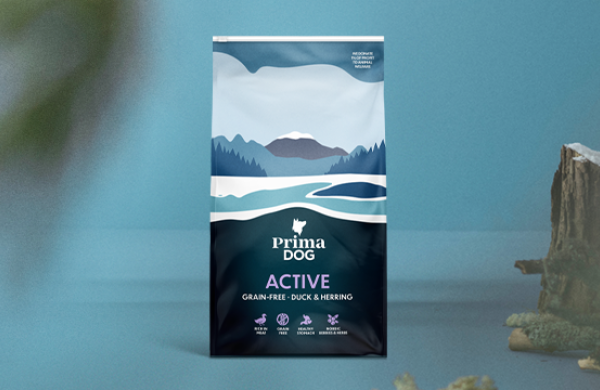
Life with a dog is wet kisses, wagging tails, and selfless joy in shared play. To ensure that every dog owner has time for precious moments with their dog during everyday life, we have developed dog food that makes feeding your four-legged friend as easy and worry-free as possible.
As dog owners ourselves, we have designed PrimaDog's dog food in the land of the midnight sun and northern lights, where nature comes close to our doorstep. The fresh scent of the forest, clean air, and open space provide our furry friends with the perfect place to express their dog-like nature. From there stems the Nordic happiness.
When the pine needles have been shaken off their fur and the muddy paws dried, offer your dog a dose of northern energy with PrimaDog's stomach-soothing and nutritious dog food.
Do you know how to choose the most suitable food for your dog? Read our tips here!
The sniffing nose that loves human petting is fundamentally still a carnivore that needs animal protein and fat. That's why all PrimaDog's dog foods always contain plenty of meat and none of the unnecessary ingredients for dogs, such as wheat. Your dog's stomach will thank you, and their coat will shine.
The Nordic superfood berries and herbs enrich all our dry foods, as well as the treats and chew bones made in Europe. Dogs of different tastes, sizes, and dietary needs will surely find their favourite meal in PrimaDog's selection. Whether your dog is a small and lively terrier or a large and gentle giant, PrimaDog offers effortless and easy choices for taking care of your furry friend's well-being.
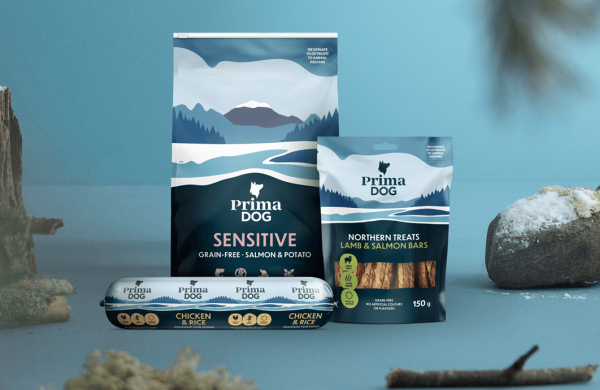
Are you looking for high-quality dog food with excellent value for money that you don't have to buy from a specialty store?
Choose PrimaDog from the grocery store shelf, offering the taste of Northern purity for your dog.
Explore our products.
Skin problems in dogs are pretty common, yet the state of a dog's skin and coat is a vital sign of the tail-waggers health. Have a look at this piece to discover the top five reasons behind skin problems in dogs and the best ways to sort them out. By the time you reach the end, you will also learn a few handy tips on preventing these problems with the right diet.
Quite a few of the skin problems in dogs are related to dry skin. This can make your furry friend itch, and too much scratching might lead to skin infections. Besides itching, dry skin can also lead to flaky skin, irritation, and even hair loss.
In the colder months, the chilly weather dries out the air, both outdoors and indoors, and this can have a knock-on effect on your dog's skin. Also, too much frolicking in water can dry the dog’s skin. On the flip side, it is not great for your dog's skin to be dirty either, so a good wash might be just what it needs.
Dog nutrition plays a big role in the health of a dog's skin and coat. Especially, Omega-3 and -6 fatty acids help keep your dog's skin supple and coat shiny. That is why all PrimaDog dry foods contain essential fatty acids. Check out PrimaDog dry foods.
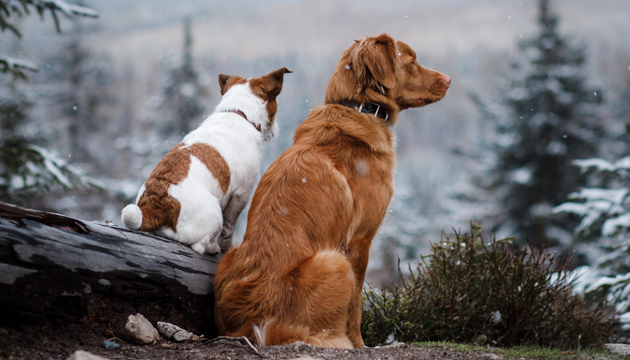
Dogs get itchy and end up giving themselves a good scratch. Constant scratching can be a bother, as it might start off skin infections. It is normal for dogs to have a bit of a scratch occasionally. Sometimes, they might just be doing it because their coat is a bit mucky, and a good bath can sort that right out.
If your dog is scratching all the time, even to the point where it is sore, you might want to pop over to the vet pretty sharpish.
Atopy: An itchy, inflammatory, and bothersome skin disease that is usually seen in young dogs. With an atopic dog you will need to follow the vet’s instructions how to treat it.
Food allergies: Dogs more often have a bit of a sensitivity to certain foods rather than a full-on food allergy, which is when the immune system gets involved. If your dog is having trouble with its stomach, it might be down to something in their food. But sometimes skin problems in dogs could be a sign of a food allergy.
Ectoparasites: The most common ectoparasites that make the dog scratch are lice and the dog flea, that both spread easily from one dog to another. You can get the medicines to get rid of external parasites from your vet.
Shampoos and soaps: Remember to stick to products made just for dogs when you are grooming the dog, as shampoos and soaps for humans can irritate the dog’s skin.
Chemicals: Those strong-smelling chemicals you use for cleaning around the house, sprucing up the furniture, or doing the laundry can be a bit rough on your dog's skin and cause irritation.
Medicine: Some medicines and vaccines can sometimes cause temporary skin symptoms and itching in your dog.
Sometimes, sorting out skin problems in dogs can be as simple as getting their diet right. Have a look into what kind of food is best for a dog with a sensitive stomach or skin.
A few things like the temperature outside and how long the days are can make a difference to when your dog sheds its fur. Dogs with thicker coats who live outside tend to shed a lot, especially in the spring when the days get longer. Those indoor dogs who are always cosy and warm might find themselves shedding all year round.
Also, female dogs can shed a bit differently because of their hormones, especially with the seasons changing. If your dog has been under anaesthetic recently, say for an operation, that might lead to a bit more shedding too. Sometimes, all this shedding can be a bit itchy for the dog. So, it is a good idea to give the dog a regular brush, particularly when it is shedding a lot.
It is handy to get to know what is normal for your dog in terms of hair loss. This way, if things start to look a bit different from the usual, you will spot it straight away. But remember, if your dog’s hair loss seems a bit out of the ordinary, it is best to have a chat with your vet.
Dogs can get flaky skin from different skin issues. Dandruff happens when dead skin cells shed and clump together. A bit of dandruff is usually normal, but if your dog has got quite a bit of it, it is always wise to figure out what is causing it.
If it is down to dry skin, you will want to treat the skin first. Getting on top of the dandruff usually helps with the dog's itchiness.
If the dandruff is not clearing up with what you are doing at home, it is best to have a word with your vet.
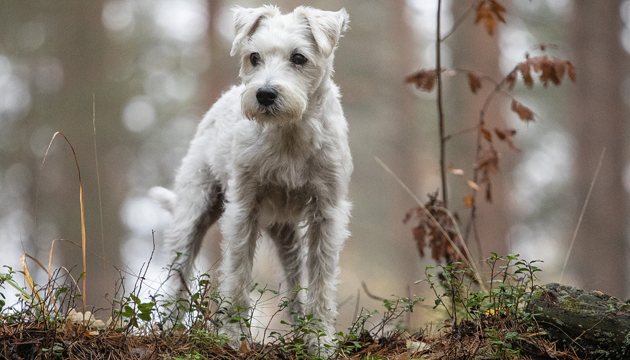
Some dogs are real water lovers who would want to spend all their time splashing around in the lake during the summer. Unfortunately, these water-loving tail-waggers are at risk of getting acute moist dermatitis, a wet skin infection known as a hot spot. This is because damp and soggy skin creates the perfect conditions for bacteria. Also, having a thick undercoat makes the dog more prone to hot spots.
Hot spots are red, swollen, and purulent-looking areas on a dog's skin. If your dog has a thick coat, it can sneakily cover up the hot spot, making it tricky to notice at first. But hot spots can get pretty big, fast – think the size of your hand. Your dog might end up licking or scratching at the sore spot.
And if the sore spot gets worse or does not start to heal with what you are doing at home, it is time to take your dog to the vet. Prolonged inflammation can be treated with antibiotics and cortisone, for example. If hot spots keep coming back, the cause for them must be solved by a vet.
Do you know how to clean the dog’s ears, spruce up its coat, and clip the nails? Check out our tips for some basic dog grooming know-how.
In some cases, skin problems in dogs can be kept at bay with a varied and balanced diet, as not getting enough of certain nutrients can show up first in the dog’s skin and coat.
Make sure your dog is getting enough protein from the diet. Dog food should contain about 25% of protein, maybe even more if needed. Also, most of the protein must be animal-based, since meat or fish is the base of dog’s nutrition. Not enough protein can really affect the health of the dog’s coat.
The dog’s coat needs biotin, sulphur and zinc, because it is mostly made of a substance called keratin that requires these nutrients to build up. So, a shabby coat could be down to a lack of these three nutrients. Biotin, zinc, and sulphur mostly come from meat.
Ensure the dog’s zinc intake. If your dog is missing zinc, you might notice its coat thinning or hair falling out. The dog may also have bald patches around its eyes and hard, bald spots on the front legs near the elbow. Zinc works best with a bit of Vitamin A, which also helps keep the coat in good nick. A great source of Vitamin A for dogs is liver.
Omega-3 and -6 fatty acids are super important for your dog's skin and coat. Especially if the dog has dry skin, a boost of these fats can be a big help.
Is your dog getting its fill of water? A dull, dry coat might be a sign the dog is not sipping as much water as it should. So, keep an eye on your dog’s water intake daily. And for a bit of extra hydration, why not treat your dog to some delicious wet food from PrimaDog. Explore the products.
Caring for a dog involves a bunch of necessary tasks, like trimming the nails, cleaning the dog’s ears, bathing the dog, and sometimes looking after the dog’s eyes. This article has got some hands-on tips on how to clean the dog’s ears and how to handle other everyday dog grooming activities.
Looking after your furry friend's teeth is a key part of life with a dog. Find out how chew bones can help with your dog's dental health.
Dogs have a fascinating variety of ears - there are pricked ears, button ears, rose ears, and all sorts of floppy ears. Keeping an eye on your dog's ears is important, as ear issues are often why dogs end up seeing the vet. So, you should know how to clean the dog’s ears if necessary.
If your dog's ears are healthy and clean, they do not really need cleaning. But, dogs with big floppy ears tend to get ear infections more easily than those with pricked ears, so it is especially important to regularly clean and check the ears of dogs with floppy ears.
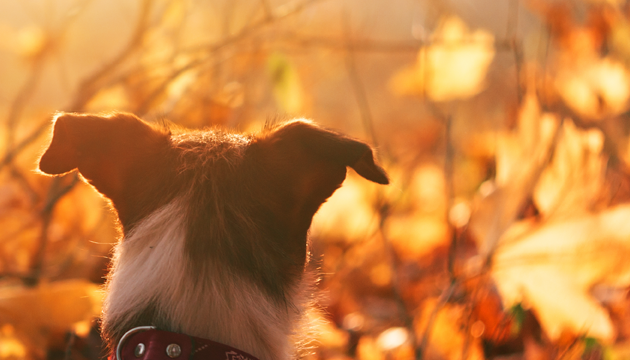
If you notice your dog scratching its ears a lot or shaking its head more than usual, it could be something like an ear infection, ear mites, or maybe an allergy.
Ear mites are more common in cats than in dogs, and many dogs end up catching this pesky parasite from the family cat. A reddish gunk in the ear that looks a bit like coffee grounds is a typical sign of ear mites. If you suspect your furry friend might have ear mites, it is best to get treatment from the vet. Keeping up with regular ear cleaning and checks for your dog can help prevent ear mites from making themselves at home in your dog's ears.
When it comes to ear infections in dogs, watch out for signs like scratchy ears, a bit of a stink, redness, and lots of gunk in the ear canals. The usual troublemakers are yeast, bacteria, and those pesky ear mites.
Dogs with long fur and floppy ears are more likely to get ear infections, so remember to learn how to clean a dog’s ears. If you think your four-legged friend might have an ear infection, it is a good idea to pop over to the vet.
Also, do not forget to give your dog's ears a good dry after the dog has had its fun in the water. A damp and warm ear is like a welcome mat for bacteria and yeast. For dogs that often get ear infections, a solid routine of cleaning and checking their ears can really help keep those infections at bay.
Did you know that if your dog has allergies or food sensitivities, it might keep getting ear infections? Swapping to grain-free dog food could help ease those symptoms. Have a look at our tips for feeding a dog with a sensitive stomach.
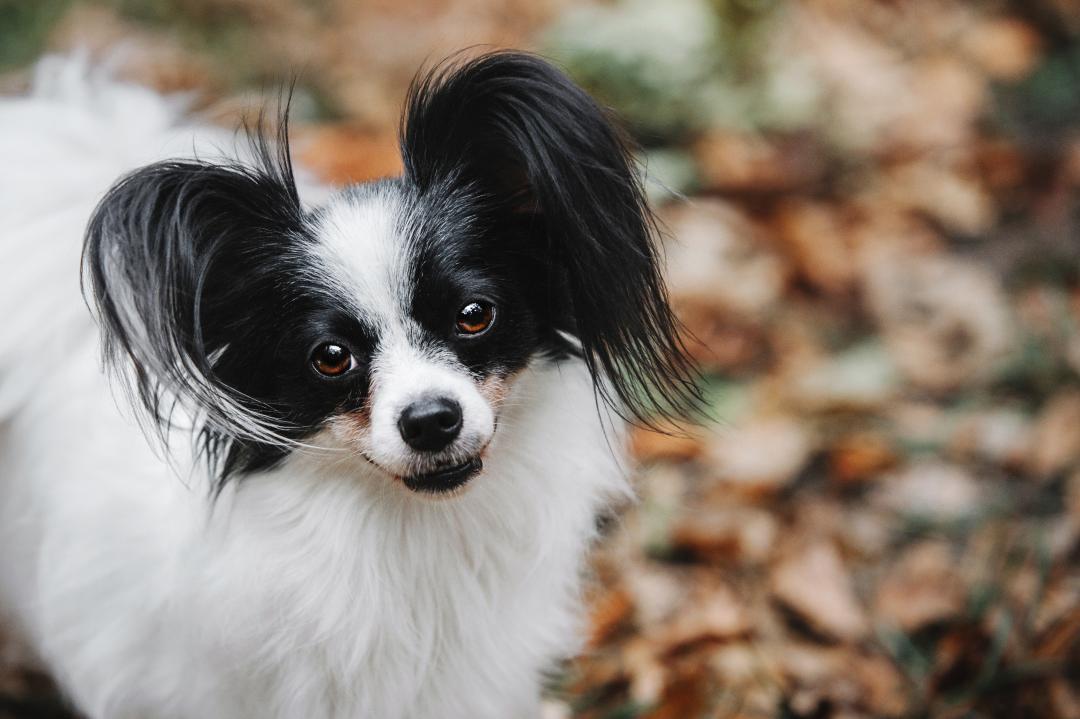
If your dog's eyes are looking bright and clear, they are probably all good and do not need any special fuss. Just like us, it is pretty normal for dogs to have a bit of sleepy dust in their eyes in the morning. You can easily wipe it away with a damp cotton pad.
Things like dusty or dry air, allergies, and bacteria can cause your dog's eyes to get a bit gunky or watery. If your dog's eyes look sore and red, or if they are tearing up a lot and staining the fur underneath, it might be time for a vet visit.
Got a long-haired sofa king or queen at home? Make sure the dog’s long fur is not bothering its eyes. Trimming the hair around the eyes can help, and for those with a bit of a 'fringe', tying it up with a hair band works great. Regularly clean around your long-haired dog's eyes and check to see if any stray hairs or other bits are causing any trouble.
If you spot a yellowish or greenish gunk coming from your dog's eyes, it could be a sign of an eye infection. The dog will often try to rub or scratch the sore and red eye. Also, if your dog starts squinting or suddenly has eye discharge or seems to be in discomfort, it might mean an infection or maybe some other eye injury. Whenever there is something up with your dog's eyes, like infections or injuries, it is always best to get the dog checked out by the vet.
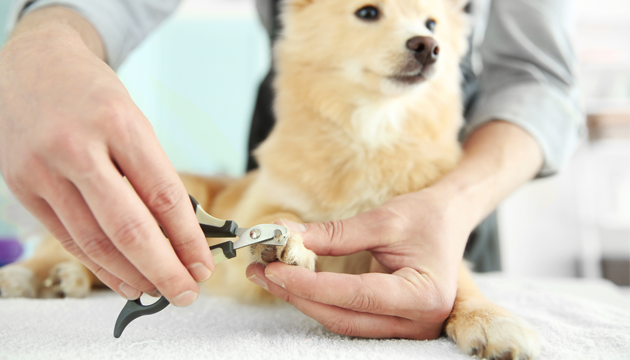
Dogs' nails grow at their own unique pace, with things like how active they are and where they walk playing a part. For instance, nails wear down quicker on asphalt compared to a soft forest trail.
It is generally a smart move to get the nail clippers out every couple of weeks. Keep an eye on your dog's dewclaws (those spurs that do not touch the ground) as they might need trimming more often than the other nails.
Long nails can be a real bother for dogs, because they are more likely to split and can even hurt the dog’s paws. It is best to give your dog's nails a little trim now and then, so the nails and the nail core do not have time to grow too long.
If your dog ends up with a torn or detached nail, it will probably need a trip to the vet, and getting that nail back in shape could take a fair bit of time.
Dog nails are made from keratin, and they need biotin and zinc to stay strong and healthy. If your dog is not getting enough of these, you might notice their nails becoming brittle and prone to cracking.
All PrimaDog dry foods are boosted with biotin and zinc, to help keep your dog's nails in tip-top shape. Have a look at our range of dry dog foods and treat your dog with a taste of Nordic happiness.
There is a bunch of blood vessels and nerves inside your dog's nail. In light-coloured nails, you can spot the core as a pinkish bit, but it is trickier to see in dark nails.
The thing is, as your dog's nails grow, so does the core. Accidentally cutting into it can really hurt your dog, and it usually leads to bleeding. While it is not a big danger, stopping the bleed can be a bit of a hassle.
Oops, nicked the nail's core? No worries, just stay chill and treat your dog to some goodies. This helps your dog link the oopsie moment with something tasty. To stop the bleeding, you can whip up a little paste with cornstarch and water – it works a treat!
Get your dog used to nail clipping from an early age, so that clipping goes smoothly with an adult four-legged friend.
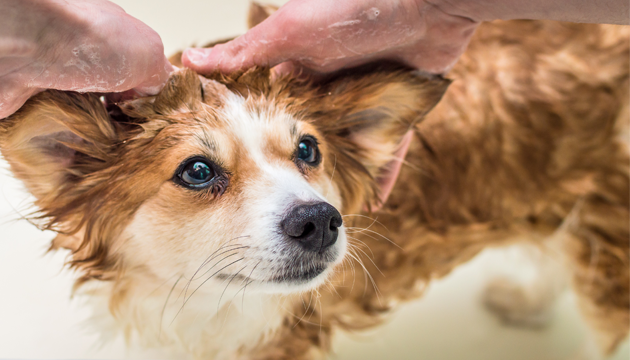
The condition of your dog's skin, the type of the coat, and the dog’s hobbies all play a part in how often you need to give your dog a full groom, from snout to tail. For dogs with short fur, a wash a couple of times a year might be enough, but those with longer, thicker coats might need more regular baths. Also, if your dog has skin issues, more frequent baths could help.
When it comes to washing your dog, warm water and a shampoo made for dogs usually do the trick. It is best to steer clear of human shampoos, as they can be harsh on your dog's skin.
Alright, when you are all set with the shower and shampoo, here is a chilled-out way to go about it:
Once you have finished shampooing, you could apply some conditioner, especially if your dog has got long hair. It makes the coat easier to manage and helps keep the dirt off. First things first, give the coat a good squeeze with your hands or a towel to get out most of the water. Then, work in the conditioner, let it sit for a bit, and give it a thorough rinse.
After the wash, grab some absorbent towels and give your dog a good, thorough dry. Do not forget to get between those toes and in the bends too. Using a dryer on a low heat setting can help shake out any loose hairs and stop tangles. Just be extra careful when drying a dog with a thick coat – you want to make sure the fur is completely dry to avoid any skin irritation or rashes.
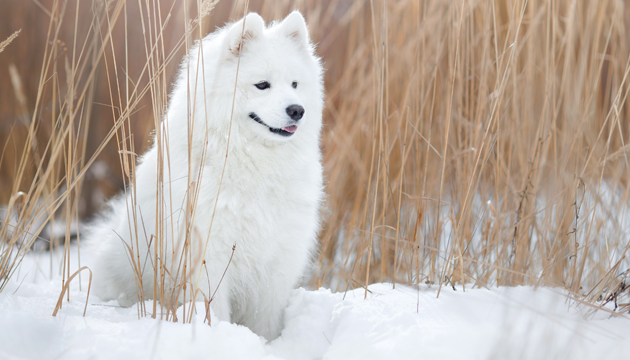
When it comes to looking after your dog's coat, the coat type is key. There are three bits to a dog's coat: the cosy undercoat that keeps the dog warm, the outercoat or the topcoat that shrugs off dirt and water, and those nifty whiskers. Not all breeds have an undercoat.
If your dog's coat looks in poor condition for a long time, or if there is an unusual amount of hair loss, it is a good idea to contact a vet.
Sudden changes in the condition of the coat can sometimes indicate a variety of health problems, such as allergies, an inappropriate diet, illness, or hormone imbalance. Read more about different skin issues the dog might have.
When a new puppy joins your family, there is quite a bit to think about. Have a read of our article to discover the essentials you will need for your new furry friend, along with other aspects of a vibrant puppy life. We have put together some handy hints on topics such as house training, helping your puppy socialise, and getting the new puppy comfortable with spending time alone.
A new puppy will usually come home around 8 weeks old. Get ready for your little mischief-maker with some practical purchases to make life easier. You can get help with your choices from pet supply shops.
When your new puppy arrives home, one of the key things to get is the right puppy food. Check out PrimaDog's guidelines for feeding your puppy and choosing the right food.
Puppyhood is a busy time for these little rascals, as they eagerly explore their surroundings and often test out new things with their teeth. Before the new puppy comes home, remember to make your house safe for the little explorer. Prevent access to dangerous areas and ensure that nothing harmful is within reach of your puppy. You can check a list of foods that are toxic to dogs here. Investing in a dog gate or puppy pen might be a good idea.
A new home is a huge change in the life of the tiny pup. The puppy has left behind everything familiar, so try to make the puppy feel as safe and comfortable as possible. Puppy homesickness can be at its peak during the first few nights. It might be a good idea to put a mattress on the floor and sleep there with your soft little friend.
Little pups need a good amount of naptime – over 18 hours a day. But they tend to snooze in shorter spurts than adult dogs. Every dog's sleep needs are quite unique. If your pup seems stressed or overly sensitive to what is going on around them, it might be a sign the puppy not getting enough time to sleep. So, amidst all the exciting new adventures, make sure your little furry friend gets plenty of rest and relaxation.
Quiet moments in your lap are a great time to get your pup used to having its ears and paws handled. Have a read about dog grooming and check out our tips on how to teach your puppy to be comfortable with nail clipping.
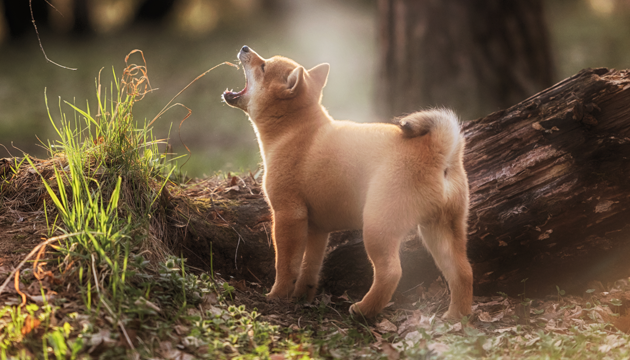
Even the liveliest little furball can be taken by surprise, and the bladder control of a pup under five months is almost non-existent. After the puppy wakes up and after playtime, and about 15–20 minutes after it has eaten, scoop up your pup and take it outside for a wee.
Initially, take the pup to the same, quiet spot outside to help it get used to doing its business there. Be patient and give the puppy plenty of time to do what it needs to. Praise and reward the pup generously when it goes in the right spot.
Expect accidents, especially at first, so instead of carpets, it is wise to line your floors with newspaper. If an accident happens in the wrong place, do not scold your puppy. Scolding and punishing can lead the pup to sneak off and do its business out of sight, which can delay housetraining.
Most dogs naturally want to keep their own place clean, which helps with housetraining a puppy. But remember, every puppy learns at its own pace, and there might still be accidents even after the puppy has been housetrained. For example, a female dog's first heat can lead to a few slip-ups. Patience and consistent routines will go a long way!
The forest is a fantastic place for a puppy's walkies. Let your new puppy taste the earthy flavours and sniff out new scents. This not only helps to strengthen the puppy’s immune system but also develops its muscles and coordination. The pup will have a blast scampering on the soft forest floor and leaping over roots.
It is important for your puppy to try different foods to diversify its gut microbiome and get used to various tastes and ingredients. Have a look at our guide on how to add variety to your dog's diet.
When the new puppy first comes home, let it take its time getting to know its new family and surroundings. After about a week, it is a good idea to gradually introduce the puppy to different places, people, and other animals. The age of 8–12 weeks is prime time for socialising a puppy.
You can take your puppy to any pup-friendly spots. Why not take a bus ride to the town centre and pop into a dog-friendly café?
It is great for your pup to wrestle and play with other puppies, and it is also good to start introducing the pup to adult dogs. Just make sure these grown-up dogs are vaccinated and puppy-friendly.
New experiences might initially scare your little furry friend. Be there to support and encourage the puppy in the new situations. If the pup gets really frightened, stay as calm as you can. Crouch down to the puppy’s level for comfort. There is no need to fuss over the pup, though. While waiting for the little one to settle, you can gently stroke the pup with slow, soothing movements.
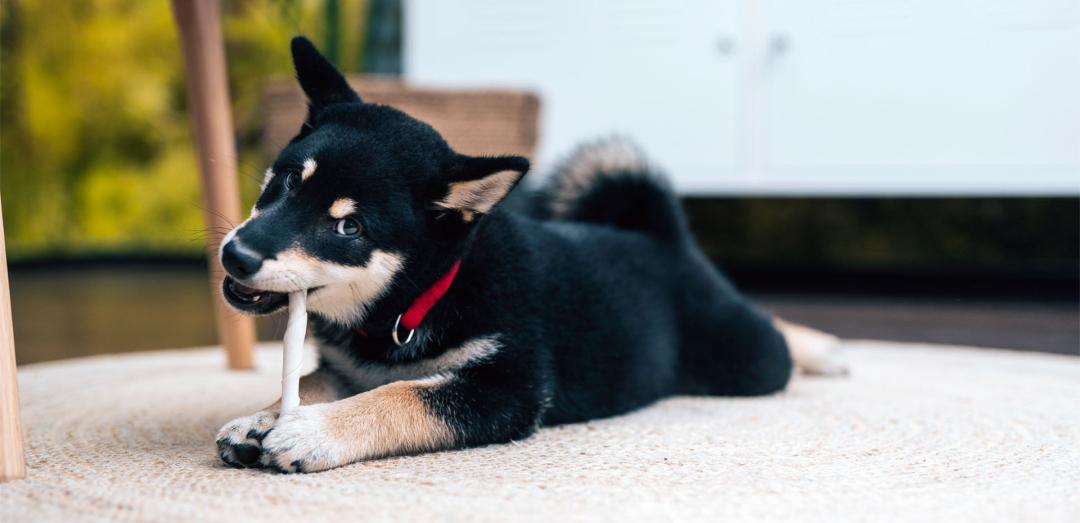
Dogs are real social butterflies, loving and needing company. That is why it is important to gently teach your puppy about being on its own. This helps the pup trust that you will always return and can nip any separation anxiety in the bud.
When your little pup has got used to its new home and family, you can start easing it into the idea of spending some time by itself.
Leave an activation toy filled with wet dog food or a safe chew bone for your puppy when its alone. If your puppy tends to gulp things down, do not leave it unsupervised with a chew bone. However, chew bones are great for puppies too! You can read more about the benefits of chew bones and how to choose the right one.